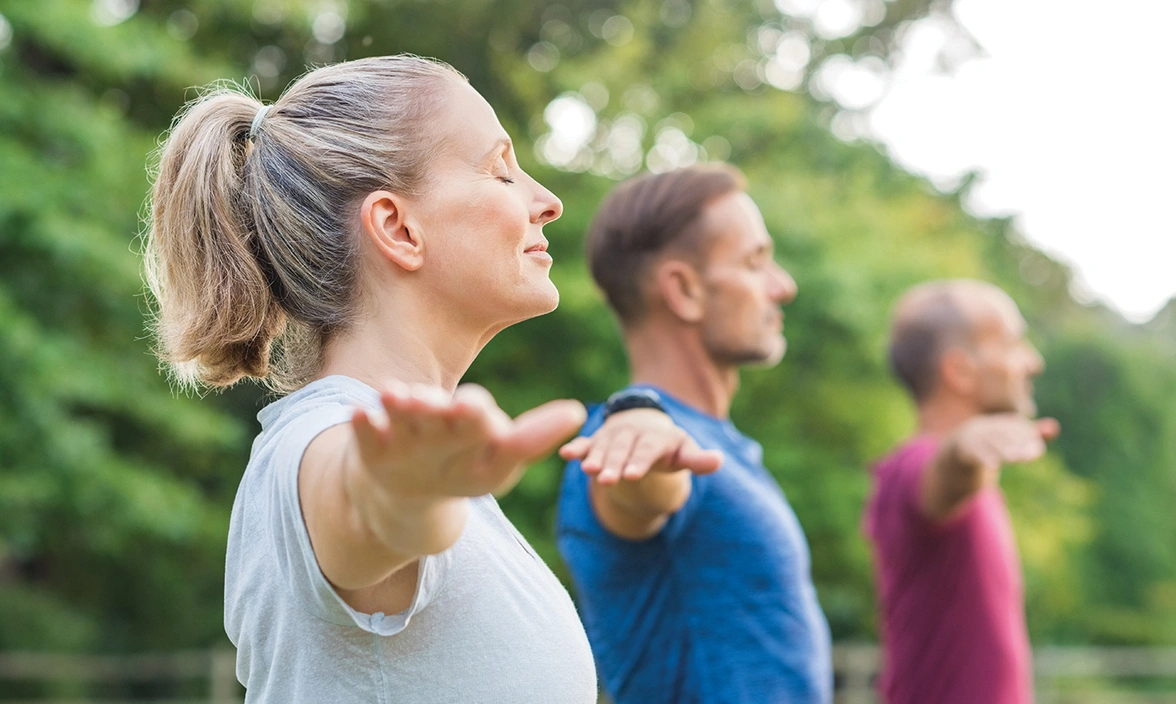What is a balance disorder?
A balance disorder is a disturbance in the vestibular system (which is commonly known as the balance system) which can cause unsteadiness, dizziness or a sensation of movement (vertigo).
A balance disorder is a disturbance in the vestibular system (which is commonly known as the balance system) which can cause unsteadiness, dizziness or a sensation of movement (vertigo).

The balance system is made up from what the eyes see, what the joints and muscles feel, and what movement is sensed by the balance part of the inner ear.
The inner ear comprises of the balance organ which send signals to the brain about the direction and speed your head is moving or turning and detects when you move in a straight line. The inner ear makes up one-third of the balance system.
It also includes inputs from the visual system and the musculoskeletal systems (muscles, joints, feet and legs).
The brain receives, interprets, and processes the information from these systems and controls your balance.
When you experience a balance disorder you will often have difficulty maintaining your balance and may experience a sensation which feels like the room is spinning (vertigo).
It can cause a person to stagger when they walk, or they may be bedbound for a period. Other symptoms include nausea, vomiting, fear and anxiety.
Symptoms may appear and disappear over short or longer periods, depending upon the exact cause of the balance disorder.
If your balance system is not working properly, your brain depends more on your eyes and muscles. This can make movements, like turning your head or walking on uneven surfaces, feel dizzy or unsteady. Avoiding these movements may slow recovery and cause muscle stiffness, headaches, and fatigue.
Video with permission by Dr. Christopher Chang.
This video requires marketing cookies to be viewed. Please accept cookies to view this video content.
Here is a list of the common types of balance disorder.
Benign Paroxysmal Positional Vertigo (BPPV) causes short episodes of vertigo or dizziness when moving your head in certain directions. Getting out of bed and rolling over in bed are two common “problem” motions.
It occurs when small crystals in the inner ear move out of place, sending false signals to the brain. BPPV accounts for about 20% of dizziness cases, with head injury being a common cause in people under 50.
Around 50% of dizziness in older adults is due to BPPV. See Meniere’s Society website for further information.
Treatment typically involves particle-repositioning manoeuvres, either in a clinic or as home exercises, which are highly effective in managing the condition.
Labyrinthitis is an inner ear infection, causing a delicate structure deep inside the ear called the labyrinth to become inflamed, affecting hearing and balance.
Common symptoms of Labyrinthitis include – dizziness, vertigo, nausea, tinnitus and hearing loss. No specific tests exist to diagnose labyrinthitis.
Medications are often used to control nausea and dizziness during severe stages of inner ear infections. If treated promptly, it will typically not cause permanent damage. However, some cases may lead to hearing loss or vestibular damage.
If dizziness or imbalance persists for months, vestibular rehabilitation exercises can help the brain adjust. While many with labyrinthitis experience only balance symptoms, this is often referred to as vestibular neuronitis, though both terms are commonly used interchangeably.
Vestibular neuritis, also known as neuronitis, is an infection of the vestibular nerve in the inner ear.
It causes the vestibular nerve to become inflamed, disrupting your sense of balance. Infections of the inner ear are often caused by viruses and less commonly by bacterial infections.
Although the balance symptoms may be similar, the treatments are very different, so correct diagnosis by a specialist is essential.
Symptoms can be mild or severe, ranging from mild dizziness to a violent spinning sensation. They may also include nausea, vomiting, unsteadiness and imbalance, difficulty with vision, and impaired concentration. Sometimes the symptoms can be so severe that they affect the ability to sit up, stand, or walk.
The onset of symptoms is usually very sudden, interrupting routine daily activities. After a period of gradual recovery over several weeks, some people are completely free of symptoms while others do not recover fully and continue to have chronic dizziness, which is referred to as a lack of compensation.
Medications are often prescribed to control nausea and to improve dizziness. If treated promptly, many inner ear infections cause no permanent damage. In some cases, however, the vestibular nerve fails to recover, resulting in chronic vestibular neuronitis.
If symptoms of dizziness or imbalance continue for several months exercises may be prescribed in order to teach the brain to adjust to the imbalance. An important part of a successful recovery is to keep moving, despite the symptoms.
Meniere’s disease is a relatively rare disorder that affects the inner ear. It can cause vertigo, tinnitus, hearing loss, and a feeling of pressure deep inside the ear.
Sufferers often describe feeling the pressure build up in the ear prior to any episode of Meniere’s, followed by balance problems and the hearing/tinnitus.
Medications are often prescribed to control nausea and to improve dizziness during the severe stage. Generally, Meniere’s will only affect one ear, but bilateral problems have been reported. Left alone Meniere’s will generally ‘burn out’ but this can take several years with sufferers struggling with balance and hearing problems – leaving no useful hearing or balance function on the affected side.
There are many and varied tests for balance disorders employed by ENT doctors and specialist audiologists. Which tests are used in an individual case will depend very much upon the history taken and the main symptoms exhibited.
The Meniere's Society is the UK's leading charity for people with dizziness and balance disorders of vestibular (inner ear) origin.
Registered charity in England and Wales no. 293358 and in Scotland no. SC040486. Royal Patron HRH The Princess Royal.